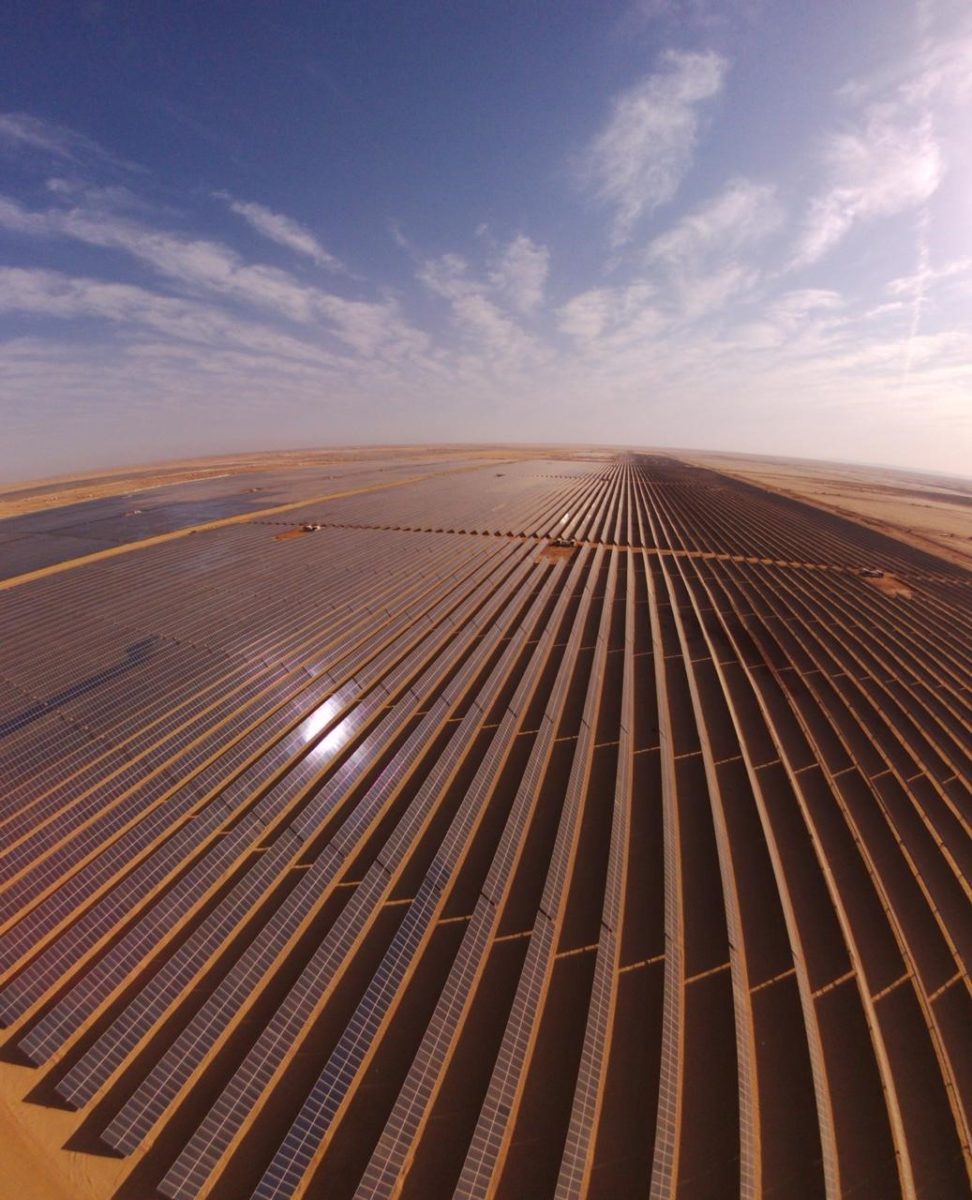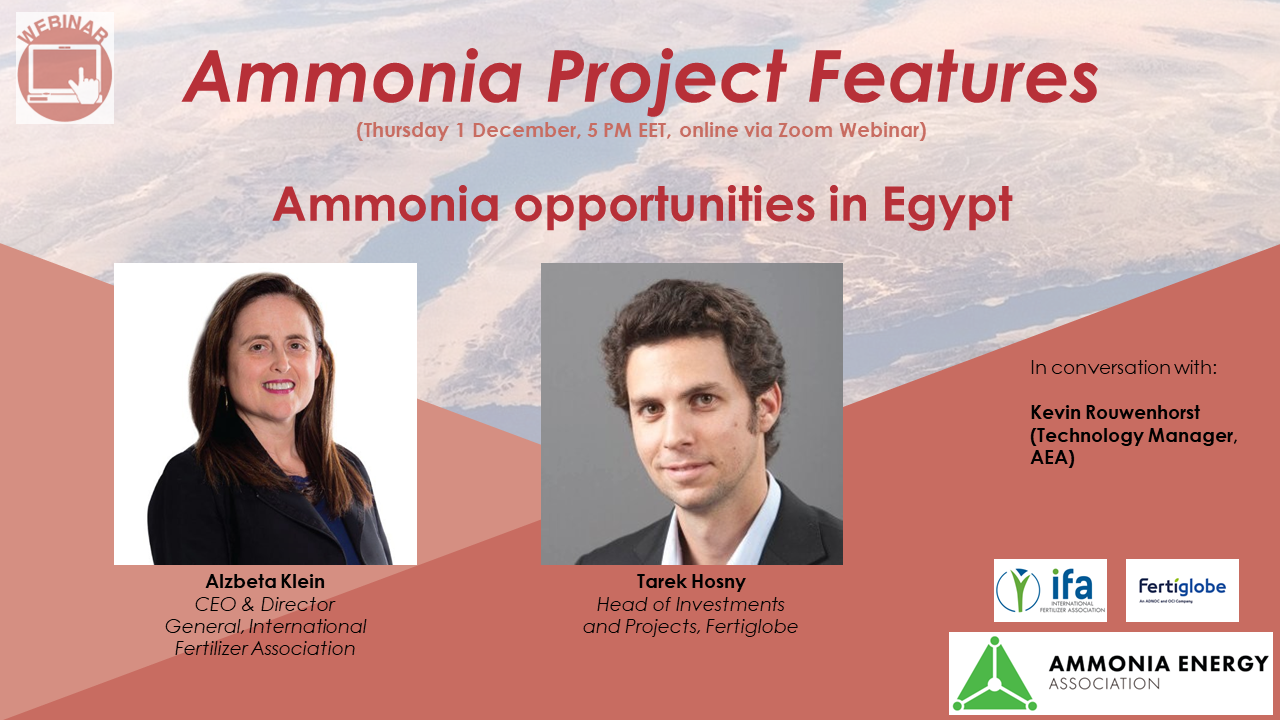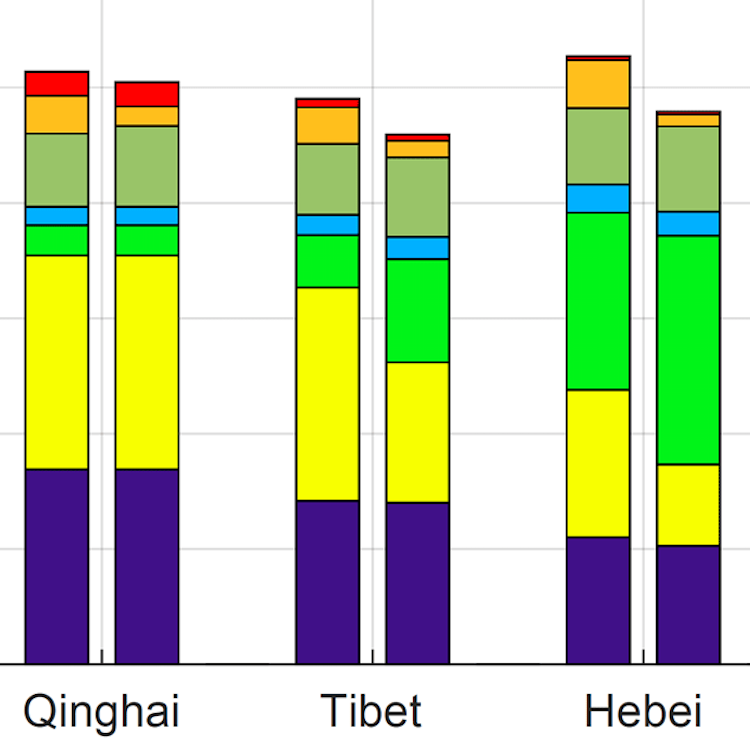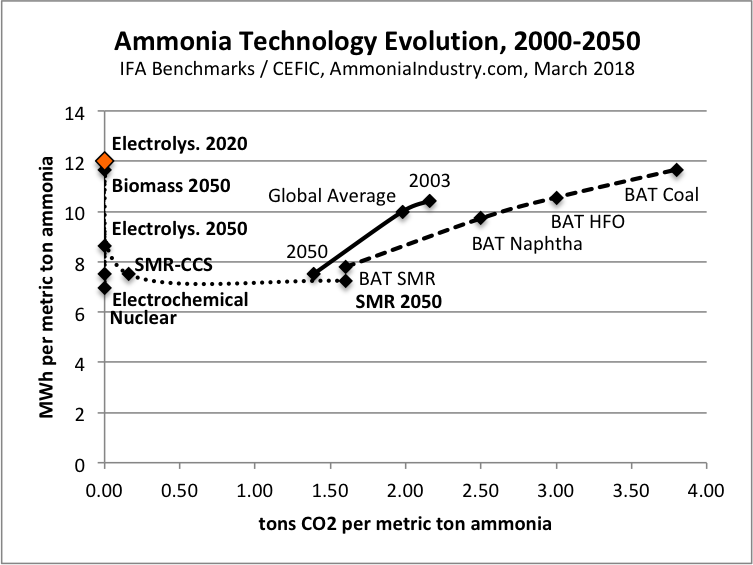For our December episode of Ammonia Project Features, we welcomed Alzbeta Klein (International Fertilizer Association) and Tarek Hosny (Fertiglobe). Our speakers discussed a pathway forward for Egypt’s fertilizer industry to decarbonize, presented the newly-commissioned Egypt Green Hydrogen project, and outlined the unique advantages (and challenges) of developing renewable production projects in Egypt.
Content Related to International Fertilizer Association (IFA)
Webinar
Ammonia opportunities in Egypt
Meet Fertiglobe, leader of a consortium developing a renewable ammonia-to-fertilizer project in Ain Sokhna, near the Suez Canal. To further explore the landscape and potential for renewable fertilizers in Egypt, we also hear from the International Fertilizer Association.
Article
Ammonia in China: change is coming
Trevor Brown November 07, 2019
ANNUAL REVIEW 2019: In the ammonia industry, Chinese data is notoriously hard to verify. Without question, the country produces more ammonia today than any other nation, and yet it has recently closed million of tons of annual capacity. Its cities are smothered in pollution, and its coal-based ammonia plants use the dirtiest technologies available. Huge questions remain. One answer is clear: China has repeatedly proven its desire and ability to become a global leader in developing and deploying clean technologies in the explicit effort to combat climate change. Within China, therefore, the question of large-scale adoption of ammonia energy technologies is increasingly becoming simpler. When?
Article
The fertilizer industry is learning to love green ammonia
Trevor Brown October 25, 2019
ANNUAL REVIEW 2019: Green ammonia is no longer a lonely venture for Yara, which used to appear alone among fertilizer producers in its desire to reduce carbon dioxide emissions from ammonia plants. While dozens of green ammonia demonstration projects and prototype technologies have been demonstrated in recent years, this progress was mostly achieved by energy companies and technology start-ups - and Yara. In the last year, however, fertilizer producers on five continents have begun feasibility studies, launched pilot demonstrations, or simply gone ahead and re-engineered their ammonia plants to replace fossil fuel inputs with renewable hydrogen.
Article
Ammonia technology portfolio: optimize for energy efficiency and carbon efficiency
Trevor Brown March 23, 2018
Earlier this month, I had the pleasure of speaking at the International Fertilizer Association's (IFA) conference on the subject of Innovations in Ammonia. A key point was the benefit of technology diversification: as with any portfolio, whether an investment account or a global industry's range of available technologies, concentration in any area represents risk, and diversification represents resiliency. Unfortunately, the ammonia industry has grown highly concentrated, and its dependency upon one technology and one feedstock represents significant risk in tomorrow's markets. This article features five charts that aim to demonstrate why energy efficiency is insufficient as the only measure of technology improvement, why it is better to optimize instead of maximize, and why market evolution is necessary to support investment decisions in sustainable ammonia synthesis technologies.




